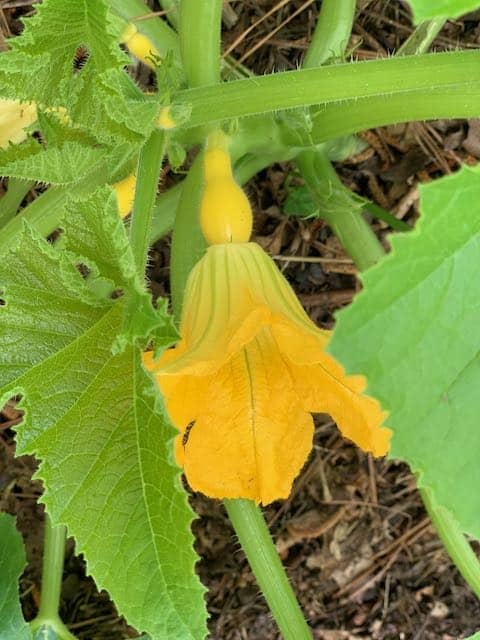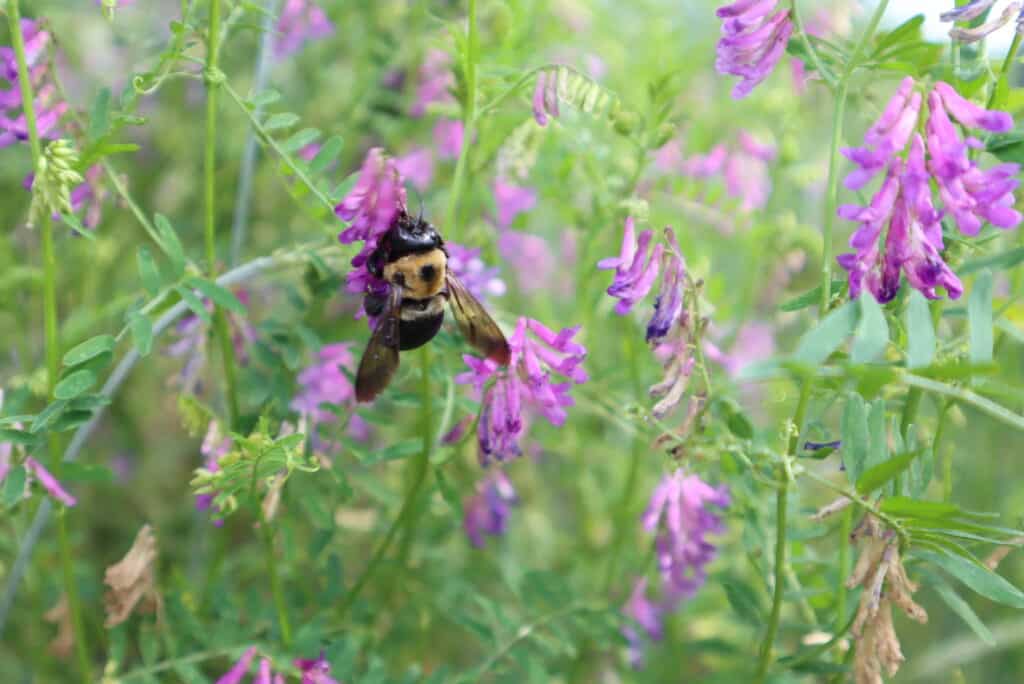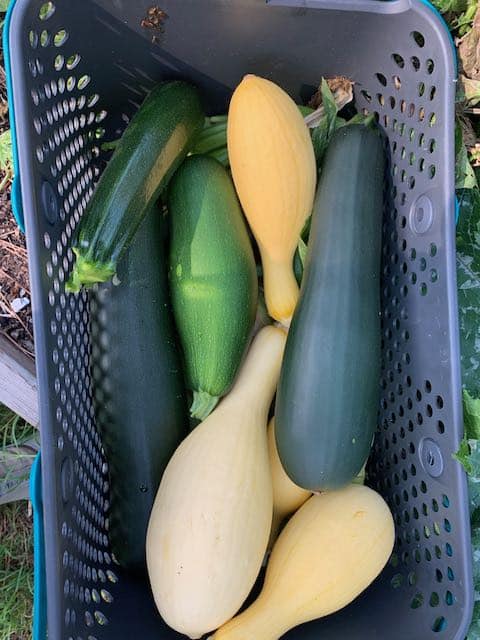Problems With Pollination: What To Do When You See Flowers But No Fruit On Squash, Zucchini & Cucumbers
You have a squash or cucumber plant that’s growing well, and you finally start to see flowers on the plant. That should mean fruit should be coming soon behind it, right?
Ideally, yes, but that’s not always the case. Sometimes you will begin to see flowers but not fruit on your squash, zucchini, and cucumber plants and suspect there’s something wrong.
Common crops gardeners plant in their summer gardens are cucumbers, squash and zucchini. These crops, in most cases, require pollination from an outside source to get fruit to form. Usually that comes in the form of a pollinator taking pollen from male flowers to female flowers (More on how to tell the difference in a little bit). Sometimes though, that doesn’t happen.
While flowers falling off the vine is normal (they are only viable for one day), fruit that doesn’t develop from those flowers is not.
(Want to listen to the full discussion? Click below to hear the podcast:)
The Process of Getting Fruit
First let’s take a minute to understand what should happen in order to get fruit. As a squash, zucchini or cucumber plant grows, it begins to create flowers. Some are male flowers and some are female.
You can easily tell the difference between a male and female flower by looking at the base of the flower. If there is a small fruit there, then it is a female flower.

If there is no presence of a baby fruit, that means male. The center of the male and female flowers differ slightly as well, and you’ll be able to tell the difference when comparing the two, but the first sign is the presence or absence of that baby fruit.
Male flowers usually begin to show up first. The purpose for this is to attract the pollinators to the plant. The presence of only male flowers when a squash or cucumber plant has begun to bloom is completely normal. Female flowers will follow about a week later, give or take a few days.

It’s important to also know that both male and female flowers only open for one day and only for a couple of hours in the morning.
Ideally, the male and female flowers open at the same time on any given morning so that when the bees go from flower to flower, they will leave behind some pollen from one of the male flowers in a female flower. When this happens, the fruit will begin to grow almost immediately and will be ready for harvest in just a couple of days.

Problems You May Encounter
But, what if this isn’t happening? There could be several reasons. The good news is that most of the reasons are either treatable or temporary.
- No pollinators present. This can be the result of many factors. Early in the season, pollinators may be occupied with wildflowers that bloom then. But they could also be absent because of excessive pesticide use either in your yard/garden or your in your area.
- Rain or unfavorable conditions (such as cool days) prevent the pollinators from being active in the morning when flowers are in bloom.
- Male and female flowers don’t open on the same day.
- Excessive heat (female flowers may not appear because the plant senses the stress).
- Excess nitrogen in soil (also makes female flowers not appear).
- Any other stressor to the plant can lead to a lack of opening female flowers; sometimes we can’t always know what that may be.

How to Fix the Issue
Fortunately, once you realize that the lack of fruit on your squash, zucchini, or cucumber plants is a result of poor pollination, there are a few actions you can take, both in the short-term and in the long-term.
Hand Pollinate
In the short term, you can hand pollinate your squash. While there are a few ways to do this, my favorite way is to keep a child-sized paintbrush in the garden and use it. When the flowers open in the morning, use the brush to transfer pollen from the male flower to the female flower.

Below is a quick look at how to do this, plus images identifying male vs female flowers:
Hand-pollinating is something that you should only have to do temporarily because eventually the pollinators will find your garden and do the work for you. In the long term, avoid pesticides (even the organic ones) because they can kill or repel the bees.
Use flowers to attract bees
Because these plants require bees to pollinate, you want to create a home in your garden that is attractive to bees. To do this, plant a diverse population of flowering plants. Plant early flowering plants like nasturtium and calendula. Bee balm and sunflowers are other great options; they flower a little later.
There are other ways to bring pollinators into your garden, too. Let your cool season crops like broccoli, kale or cilantro go to flower (or bolt) instead of taking them out. To learn more about what it means when your plants bolt click here.)
You can also select cover crops to plant in the fall that will bloom early in the spring, like crimson clover and hairy vetch. Bees love the flowers of my cover crop, hairy vetch, shown below.

Plant succession crops
Another way to ensure you get a great harvest of these crops is to plant succession plantings of squash, zucchini and cucumbers a few times in the growing season. Bees tend to be more active in our gardens in the heat of the summer when wildflowers have faded, and lack of pollination is a non-issue.
By planting these crops later in the season you’ll have a fresh new harvest with more likelihood of complete pollination. To learn more about other succession sowing options for your garden, click here.

Plant strategic varieties
Planting two or more different varieties of squash or zucchini can also help. Not only will they will pollinate one another, but also by planting different varieties, I’ve found that the male and female flowers have a better chance of opening at the same time with multiple plantings.
You can also find certain varieties in seed catalogs called ‘parthenocarpic’ seeds. While they are more expensive, they do not require pollination from an outside source. These can also produce a seedless crop if that is something that intrigues you. These options might be ideal for the early season if you don’t want to hand-pollinate. I prefer to buy parthenocarpic cucumbers because I don’t hand-pollinate the smaller cucumber flowers.
Final thoughts
Hopefully now you understand that while finding flowers with no fruit can be discouraging, it’s treatable and temporary in most cases.
Do you get overwhelmed with garden planning?

Subscribe here for my best tips to plan your garden in just 7 days -- all for FREE.
Plus, I'll send you my "In the Garden E-mail" on Fridays, periodic updates on garden resources relevant to you, and you'll receive access to my entire bank of free garden downloads!
You are also agreeing to our privacy policy.


Thank you for the clear instructions on pollination issues. Is there a way to fix the excess nitrogen problem?
Not that I’m aware of…nitrogen is used by a lot of plants so I’d think it will eventually become less of an issue with time (obviously don’t fertilize with nitrogen fertilizers). Planting nitrogen-hungry crops like brassicas could help as well.